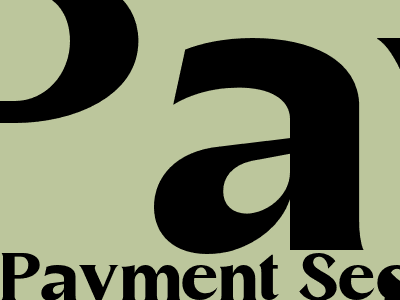
Payment Security Market to See Explosive Growth by 2032
Recent Market Analysis and Key Trends
The payment security market is poised for remarkable growth in the coming years, driven by the increasing adoption of digital payments and the growing threat of cybercrime. The market is expected to reach $62.42 billion by 2032, expanding at a compound annual growth rate (CAGR) of 12.5%. The surge in e-commerce, mobile payments, and contactless transactions has heightened the need for robust payment security solutions to protect sensitive financial data.Key trends shaping the market include the proliferation of sophisticated cyberattacks, the rise of cloud-based payment platforms, and the implementation of stricter data protection regulations. Financial institutions and merchants are increasingly investing in payment security measures to mitigate risks and maintain customer trust.
Major Players and Competitive Landscape
Prominent players in the payment security market include PayPal, SecurionPay, Bluefin Payment Systems, Kount, and Elavon. These companies offer a range of payment security solutions, including fraud detection, data encryption, tokenization, and behavioral analytics.The market is characterized by intense competition, with vendors vying to offer innovative solutions and expand their market share. Strategic partnerships, mergers and acquisitions, and product development are key strategies adopted by players to gain a competitive edge.
Market Drivers and Barriers
The growth of the payment security market is driven by several factors, including:- Growing adoption of digital payments
- Increased cybercrime threats
- Stricter data protection regulations
- Rising demand for cloud-based payment platforms
- Complexity of payment security technologies
- Integration challenges with legacy systems
- Evolving cyberattack techniques
Challenges and Opportunities
The payment security market presents both challenges and opportunities for vendors and users.One major challenge is the increasing sophistication of cyberattacks. Fraudsters are constantly developing new techniques to bypass security measures, making it imperative for vendors to stay ahead of the curve by investing in research and development.
Another challenge lies in the integration of payment security solutions with legacy systems. Many businesses still rely on outdated systems that may not be compatible with modern payment security technologies. This can create vulnerabilities and increase the risk of data breaches.
Despite these challenges, the market also offers significant opportunities for growth. The growing adoption of cloud-based payment platforms is creating new avenues for innovation. Cloud-based solutions offer greater flexibility, scalability, and security, making them attractive to businesses of all sizes.
Additionally, the implementation of stricter data protection regulations is driving demand for payment security solutions. Businesses are increasingly required to comply with regulations such as the General Data Protection Regulation (GDPR) and the Payment Card Industry Data Security Standard (PCI DSS). This creates opportunities for vendors to offer solutions that help businesses meet their compliance obligations.
Future Outlook
The future of the payment security market is bright. The increasing adoption of digital payments, the growing threat of cybercrime, and the implementation of stricter data protection regulations will continue to drive market growth. Vendors are expected to focus on innovation and the development of new technologies to address emerging threats and meet the evolving needs of businesses.The market is expected to witness the rise of artificial intelligence (AI) and machine learning (ML) in payment security. These technologies offer advanced fraud detection capabilities and can help businesses identify and mitigate risks more effectively.